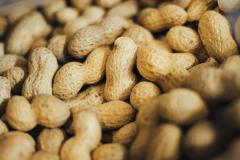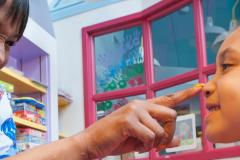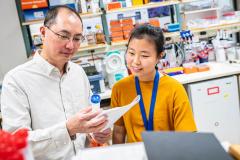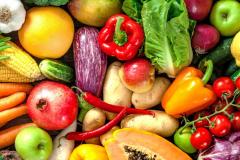- Overview
-
Our lab is developing technology to solve the organ shortage problem. We work on different axes, including organ generation in xenogeneic species, xenogeneic immune-tolerance induction and long-term subzero organ preservation. Moreover, we study the mechanisms of cancer recurrence after liver transplantation and develop strategies to reduce such risk.
- Publications
-
Portosystemic shunting prevents hepatocellular carcinoma in non-alcoholic fatty liver disease mouse models
PLoS ONE
DOI: 10.1371/journal.pone.0296265
2023Neurometabolic changes in a rat pup model of type C hepatic encephalopathy depend on age at liver disease onset
Metabolic Brain Disease
DOI: 10.1007/s11011-023-01210-w
2023Antibody Response After the Third SARS-CoV-2 Vaccine in Solid Organ Transplant Recipients and People Living With HIV (COVERALL-2)
Open Forum Infectious Diseases
DOI: 10.1093/ofid/ofad536
2023Surgical site infections after kidney transplantation are independently associated with graft loss
American Journal of Transplantation
DOI: 10.1016/j.ajt.2023.11.013
2023Impact of the presence of median arcuate ligament on biliary complications after liver transplantation
Clinical Transplantation
Eleftherios Gialamas and Michela Assalino and Laure Elkrief and Fani Apostolidou-Kiouti and Arthur Piveteau and Graziano Oldani and Philippe Compagnon and Thierry Berney
DOI: 10.1111/ctr.14771
09/2022Neurometabolic changes in a rat pup model of type C Hepatic Encephalopathy depend on age of liver disease onset
Research Square
DOI: 10.21203/rs.3.rs-2354178/v1
2022FGF21 negatively affects long-term female fertility in mice
Heliyon
DOI: 10.1016/j.heliyon.2022.e11490
2022Getting an A Can Sometimes Kill You
Transplantation
DOI: 10.1097/TP.0000000000004005
2022Impact of Maternal Obesity on Liver Disease in the Offspring: A Comprehensive Transcriptomic Analysis and Confirmation of Results in a Murine Model
Biomedicines
DOI: 10.3390/biomedicines10020294
2022Developing and testing a Corona VaccinE tRiAL pLatform (COVERALL) to study Covid-19 vaccine response in immunocompromised patients
BMC Infectious Diseases
DOI: 10.1186/s12879-022-07621-x
2022Surgical site infections after simultaneous pancreas kidney and pancreas transplantation in the Swiss Transplant Cohort Study
Journal of Hospital Infection
DOI: 10.1016/j.jhin.2022.07.009
2022Epidemiology and outcomes of bone and joint infections in solid organ transplant recipients
American Journal of Transplantation
DOI: 10.1111/ajt.17184
2022Antibody Response in Immunocompromised Patients After the Administration of Severe Acute Respiratory Syndrome Coronavirus 2 (SARS-CoV-2) Vaccine BNT162b2 or mRNA-1273: A Randomized Controlled Trial
Clinical Infectious Diseases
DOI: 10.1093/cid/ciac169
2022Use of statins after liver transplantation is associated with improved survival: results of a nationwide study
Alimentary Pharmacology and Therapeutics
DOI: 10.1111/apt.17192
2022Artificial Intelligence: Present and Future Potential for Solid Organ Transplantation
Transplant International
DOI: 10.3389/ti.2022.10640
2022Bioengineered Islet Cell Transplantation
Current Transplantation Reports
DOI: 10.1007/s40472-021-00318-1
2021Epithelioid hemangioendothelioma, an ultra-rare cancer: a consensus paper from the community of experts
ESMO Open
DOI: 10.1016/j.esmoop.2021.100170
2021Use of induction therapy in pediatric heart transplant recipients in Switzerland – Analysis of the Swiss national database
Transplant Immunology
DOI: 10.1016/j.trim.2021.101443
2021Predicting recurrence of hepatocellular carcinoma after liver transplantation using a novel model that incorporates tumor and donor-related factors
Transplant International
DOI: 10.1111/tri.14161
2021Pre-transplant donor-specific HLA antibodies and risk for poor first-year renal transplant outcomes: results from the Swiss Transplant Cohort Study
Transplant International
DOI: 10.1111/tri.14119
2021The Swiss approach to the COVID-19 outbreak
American Journal of Transplantation
Beat Moeckli and Andrea Peloso and Graziano Oldani and Lorenzo A. Orci and Vanessa Banz and Philipp Dutkowski and Christian Toso and Thierry Berney
DOI: 10.1111/ajt.15939
07/2020Tolerogenic properties of liver macrophages in non-alcoholic steatohepatitis
Liver International
Lorenzo A. Orci and Mario Kreutzfeldt and Nicolas Goossens and Laura Rubbia-Brandt and Florence Slits and Karim Hammad and Vaihere Delaune and Graziano Oldani and Francesco Negro and Sophie Clément and Carmen Gonelle-Gispert and Léo H. Buhler and Christian Toso and Stéphanie Lacotte
DOI: 10.1111/liv.14336
03/2020Reduced complications after arterial reconnection in a rat model of orthotopic liver transplantation
Journal of Visualized Experiments
DOI: 10.3791/60628
2020Response of a European surgical department to the COVID-19 crisis
Swiss medical weekly
DOI: 10.4414/smw.2020.20241
2020The impact of short-term machine perfusion on the risk of cancer recurrence after rat liver transplantation with donors after circulatory death
PLOS ONE
Graziano Oldani and Andrea Peloso and Florence Slits and Quentin Gex and Vaihere Delaune and Lorenzo A. Orci and Yohan van de Looij and Didier J. Colin and Stéphane Germain and Claudio de Vito and Laura Rubbia-Brandt and Stéphanie Lacotte and Christian Toso
DOI: 10.1371/journal.pone.0224890
11/2019Chimeric xenotransplantation.
Current opinion in organ transplantation
DOI: 10.1097/mot.0000000000000683
PubMed: 31369482
10/2019Chimeric xenotransplantation
Current Opinion in Organ Transplantation
DOI: 10.1097/MOT.0000000000000683
2019Recent advances in liver transplantation for cancer: The future of transplant oncology
JHEP Reports
DOI: 10.1016/j.jhepr.2019.07.004
2019Transplantation for colorectal metastases: on the edge of a revolution.
Translational gastroenterology and hepatology
DOI: 10.21037/tgh.2018.08.04
PubMed: 30363763
09/2018Regenerative Medicine and Diabetes: Targeting the Extracellular Matrix Beyond the Stem Cell Approach and Encapsulation Technology.
Frontiers in endocrinology
DOI: 10.3389/fendo.2018.00445
PubMed: 30233489
08/2018Chimeric liver transplantation reveals interspecific graft remodelling.
Journal of hepatology
DOI: 10.1016/j.jhep.2018.07.008
PubMed: 30031887
07/2018Dynamic Volume Assessment of Hepatocellular Carcinoma in Rat Livers Using a Clinical 3T MRI and Novel Segmentation
Journal of Investigative Surgery
DOI: 10.1080/08941939.2016.1276987
2018Effects of the gut–liver axis on ischaemia-mediated hepatocellular carcinoma recurrence in the mouse liver
Journal of Hepatology
DOI: 10.1016/j.jhep.2017.12.025
2018In-lab manufacturing of decellularized rat renal scaffold for kidney bioengineering
Methods in Molecular Biology
DOI: 10.1007/7651_2017_96
2018Xenogeneic chimera—Generated by blastocyst complementation—As a potential unlimited source of recipient-tailored organs
Xenotransplantation
Graziano Oldani and Andrea Peloso and Stéphanie Lacotte and Raphael Meier and Christian Toso
DOI: 10.1111/xen.12327
07/2017Cover Image, Volume 24, Issue 4
Xenotransplantation
Graziano Oldani and Andrea Peloso and Stéphanie Lacotte and Raphael Meier and Christian Toso
DOI: 10.1111/xen.12329
07/2017Enlarged selection criteria for hepatocellular cancer: Is the upper limit needed?
Translational Gastroenterology and Hepatology
DOI: 10.21037/tgh.2017.09.02
2017Procurement professionalization: a mandatory step to improve the availability and quality of whole pancreas grafts
Transplant International
DOI: 10.1111/tri.12904
2017Alloimmune monitoring after islet transplantation: A prospective multicenter assessment of 25 recipients
Cell Transplantation
DOI: 10.3727/096368916X692023
2016Exercise-based Interventions for Nonalcoholic Fatty Liver Disease: A Meta-analysis and Meta-regression
Clinical Gastroenterology and Hepatology
DOI: 10.1016/j.cgh.2016.04.036
2016Efficient nonarterialized mouse liver transplantation using 3-dimensional–printed instruments
Liver Transplantation
DOI: 10.1002/lt.24637
2016Effect of ischaemic preconditioning on recurrence of hepatocellular carcinoma in an experimental model of liver steatosis
British Journal of Surgery
DOI: 10.1002/bjs.10080
2016Impact of myeloid-derived suppressor cell on Kupffer cells from mouse livers with hepatocellular carcinoma
OncoImmunology
DOI: 10.1080/2162402X.2016.1234565
2016Donor characteristics and risk of hepatocellular carcinoma recurrence after liver transplantation
British Journal of Surgery
DOI: 10.1002/bjs.9868
2015Liver trauma during combined liposuction and abdominoplasty: A rare but potentially lethal complication
Aesthetic Surgery Journal
DOI: 10.1093/asj/sjv028
2015Pre-retrieval reperfusion decreases cancer recurrence after rat ischemic liver graft transplantation
Journal of Hepatology
DOI: 10.1016/j.jhep.2014.03.036
2014Alloimmune activation promotes anti-cancer cytotoxicity after rat liver transplantation
PLoS ONE
DOI: 10.1371/journal.pone.0091515
2014Current status of robotic liver resection: A systematic review
Expert Review of Anticancer Therapy
DOI: 10.1586/14737140.2014.863155
2014Systematic review and meta-analysis of fibrin sealants for patients undergoing pancreatic resection
HPB
DOI: 10.1111/hpb.12064
2014The Role of Hepatic Ischemia–Reperfusion Injury and Liver Parenchymal Quality on Cancer Recurrence
Digestive Diseases and Sciences
DOI: 10.1007/s10620-014-3182-7
2014Reply to: "Pre-retrieval reperfusion decreases cancer recurrence after rat ischemic liver graft transplantation"
Journal of Hepatology
DOI: 10.1016/j.jhep.2014.06.011
2014The C57BL/6J Mouse Exhibits Sporadic Congenital Portosystemic Shunts
PLoS ONE
DOI: 10.1371/journal.pone.0069782
2013Manufacturing devices and instruments for easier rat liver transplantation.
Journal of visualized experiments : JoVE
DOI: 10.3791/50380
2013Orthotopic liver transplantation in rats
Journal of Visualized Experiments
DOI: 10.3791/4143
2012Posttransplant cellular immune reactivity against donor antigen correlates with clinical islet transplantation outcome: Towards a better posttransplant monitoring
Cell Transplantation
DOI: 10.3727/096368912X655000
2012A Novel Technique for Rat Liver Transplantation Using Quick Linker System: A Preliminary Result
Journal of Surgical Research
DOI: 10.1016/j.jss.2007.12.779
2008Short-Term Cyclosporine Therapy and Cotransplantation of Donor Splenocytes: Effects on Graft Rejection and Survival Rates in Pigs Subjected to Renal Transplantation
Journal of Surgical Research
DOI: 10.1016/j.jss.2008.01.028
2008Liver transplantation in swine: A model for tolerance induction,Il trapianto di fegato nel suino: Considerazioni su un modello per lo studio dell'induzione di tolleranza
Minerva Chirurgica
2006Blockade of B7:CD28 costimulatory pathway reduces the vascular damage in an experimental model of chronic rejection,Riduzione del danno vascolare in un modello sperimentale di rigetto cronico mediante blocco selettivo della via di costimolazione B7:CD28
Minerva Chirurgica
2005Post ischemic renal bleeding from renal puncture site
Investigative Urology
1981Case against routine 2-stage cystectomy for carcinoma of the bladder
Journal of Urology
DOI: 10.1016/S0022-5347(17)54889-2
1981 - Research
-
Immunosuppression-free transplantation of autologous livers grown in xenogeneic species
Creating autologous livers from patients’ cells would solve many of the important issues connected to transplantation, including immunosuppression-related side effects and the shortage of donor. Because autologous transplantable livers would be a rapidly available resource, we would see the expansion of transplant for oncologic indications and pediatric patients would receive a transplant long before becoming too sick or developing irreversible impairments. Overall, the way we treat chronic organ impairment and end stage disease would be revolutionized, with invaluable benefit for our patients, their families and the health care system.
The dramatic advances in induced pluripotent stem cells (iPSCs) technology over the last few years are turning the idea of xeno-grown autologous (x-gA) livers into a tangible reality. The advent of blastocyst complementation with iPSCs allowed for the generation of interspecific chimeras with few human cells in pigs and mice, and the creation of mouse complete pancreatic parenchyma in a rat. In addition, our group successfully transplanted chimeric mouse/rat livers into rats and showed improved function and survival over classic mouse to rat xenotransplantation. This model proves the ability for recipient-oriented remodeling and suggests that the liver can grow far beyond the size limits of the species of origin.
The present project aims to establish fundamental concepts which will set the stage for human-oriented studies and clinical applications. In particular:
1) Establish immunosuppression-free long- term survival of rats transplanted with autologous livers generated in mice
2) To generate xenogeneic autologous human livers in miceDesensitization by clonal deletion, to accept future xenogeneic grafts: towards a “Transplant Vaccine”
Exposing a species to xenogenic tissue during the pre-immune phase (in-utero) may induce tolerance to xenogeneic solid organ transplantation in adulthood. We know from our experience that mouse-rat chimeras generated by blastocyst complementation are keen to accept organs and tissues from the two species. The aim of this project is to develop a strategy to expose mice to rat tissue in utero and to compare the outcomes of kidney and skin xenotransplantation to the matching whole-body chimeras.Passive isochoric sub-zero organ preservation
Transplantable organs are usually stored at 0-1 degrees Celsius. Lower temperatures determine the creation of ice crystals that compromise cellular integrity. Being able to extend the time an organ can be stored by lowering the temperature and, at the same time avoiding ice formation would facilitate long-distance transportation. Moreover, it would allow the creation of an organ bank, although short-term. With that in mind, we are designing and testing passive isochoric chambers that may allow organ preservation at sub-zero temperatures.Implantable devices to reduce complications of pancreatic surgery
The leak of the pancreatico-jejunal (PJ) anastomosis or the pancreatic stump is a common complication that afflicts patients resected of the pancreas. Such complication entails longer hospital stays in the best case, but can also start a chain of events, sometimes leading to the patient's death (1-2%). Our group has designed and patented an implantable device that may significantly reduce the leak rate of PJ anastomoses. We are now working on producing the device with absorbable polymers, aiming at a pilot study in the next 1-2 years.GrantsSwiss National Science Foundation (SNSF), Ambizione Grant. $1,050,000 CAD. August 2020 – July 2024
Innogap. $35,000 CAD. 2023
Fondation Schmieder – Bohrisch. $54,000 CAD. 2020
Société Académique de Genève. $27,000 CAD. 2020
Honours & Awards2022 Swiss Transplant Society Excellence Award
2019 Swiss Transplant Society Award: 1st prize for basic research
2017 Prix “Gilles Mentha” for translational transplantation research – Geneva University Hospitals
2012 SSCV Poster Price, Swiss Surgery Congress Annual Meeting – Davos
Research Group MembersMina Kolahdouz, Research technician IV
A safer treatment path for high-risk children to overcome food allergies
New research from BC Children’s Hospital Research Institute and UBC reveals a safe path to overcoming food allergies for older children or building resistance for those who can’t risk consuming allergens. It’s called sublingual immunotherapy (SLIT), and it involves placing small amounts of food allergens under the tongue.





